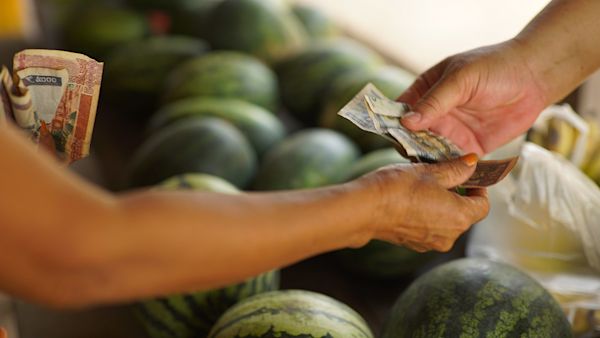
We’re constantly working hard to improve the Kiva experience for lenders, borrowers and Field Partners. One improvement we’ve been working on relates to the way Kiva loans are affected by foreign currency fluctuations. Foreign currency fluctuation against the US dollar has a significant impact on our Field Partners and we’re excited that we’ve created a solution we think will be effective in addressing this problem. Field Partners in some regions now have the option to pass on all currency exchange risk to lenders, enabling them to better manage their cash flow and serve more borrowers.
“The local currency offer will be very helpful to us as it minimizes our exposure to foreign exchange movements and this will, in turn, help us reduce our overall cost of funds which will ultimately drive growth to smallholder farmers. We're excited to move into this new phase with Kiva.”
--Adrian Safari, CFO, Juhudi Kilimo, Kenya
How does currency exchange affect Kiva?

All Kiva loans are made in US dollars. However, many Field Partners disburse those loans to borrowers in their local currency. When they receive the funds from Kiva, partners usually exchange the funds at a local bank for local currency in order to use the funds to cover loans. The borrower then repays their loan in the local currency and the Field Partner will exchange the funds back into US dollars to repay Kiva.
Problems arise when local currencies fluctuate relative to the dollar. If a local currency loses value over the course of the loan, the borrower’s repayment is worth less than the original loan amount in US dollars. Field Partners must then use more of their local currency in order to repay Kiva in US dollars. This means that the Field Partner has to cover the additional cost incurred from the currency exchange.
Take the example of Kiva’s Field Partner Thanh Hoa Microfinance Institution in Vietnam. When a Kiva loan reaches Thanh Hoa MFI, they might exchange the US dollars for Vietnamese dongs at a rate of 17,000 Vietnamese dongs per 1 US dollar. The funds are then given to the borrower. Then the Vietnamese dong fluctuates, and then the borrower repays the loan. On the day Thanh Hoa MFI exchanges the Vietnamese dongs to US dollars to send back to Kiva, 1 US dollar is exchanged for 19,000 Vietnamese dongs. Thanh Hoa MFI still owes Kiva the original amount in US dollars, but now has to use 2,000 more of its local currency to repay each US dollar.
Currency fluctuations increase the cost of borrowing from Kiva. Small fluctuations can add up, and large fluctuations can be catastrophic for some Field Partners. Managing this currency risk takes an operational toll on our Field Partners and it can hinder their ability to work with new borrowers or post more loans on Kiva’s platform.
Our solution

Until now, all Field Partners covered the first 10% of currency losses while Kiva lenders covered the rest. Now, to help Field Partners reduce risk, stabilize cash flow and facilitate more loans, select Field Partners have the option to pass all currency risk on to Kiva lenders.
Kiva now offers Field Partners two models for currency risk. One still requires Field Partners to assume the first 10% of currency risk, while the other passes 100% of the currency risk to lenders. As we roll out this change, increased currency exchange losses will be a possibility for most loans on Kiva’s site. However, some Field Partners choose to bear this risk themselves instead of passing it on to lenders. The “Currency exchange loss” section of each loan page will indicate which model each loan employs.
With this change, Kiva is exposed to currency gains for the first time. Once a loan has been repaid in full, any currency gains will help offset any losses incurred for that specific loan. Because Kiva loans are not investment vehicles capable of earning a profit, any excess foreign exchange gains will be retained in a Kiva account that will be used to fund new loans.
Lenders can choose how much risk they’d like to take on by filtering their loan search with the checkbox labeled “Exclude loans with currency risk” in advanced filters. This will narrow the search to loans without the risk of currency loss. Lenders can also diversify their portfolio across various countries to minimize currency risk. This helps to limit exposure to currency losses in any one region.
Kiva is undertaking this change with immense gratitude to our lenders, whose generosity inspires us every day. Click here to make a loan and make an impact.














